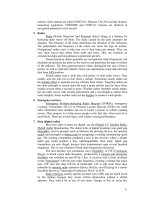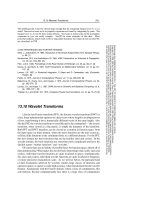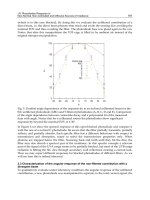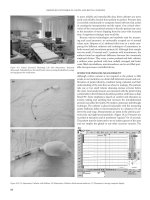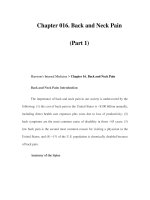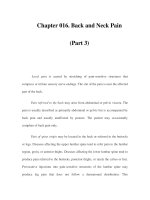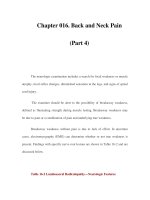Chapter 016. Back and Neck Pain (Part 11) doc
Bạn đang xem bản rút gọn của tài liệu. Xem và tải ngay bản đầy đủ của tài liệu tại đây (695.12 KB, 5 trang )
Chapter 016. Back and Neck Pain
(Part 11)
Psychiatric Disease
CLBP may be encountered in patients who seek financial compensation; in
malingerers; or in those with concurrent substance abuse, chronic anxiety states, or
depression. Many patients with CLBP have a history of psychiatric illness
(depression, anxiety, substance abuse) or childhood trauma (physical or sexual
abuse) that antedates the onset of back pain. Preoperative psychological
assessment has been used to exclude patients with marked psychological
impairments that predict a poor surgical outcome.
Unidentified
The cause of low back pain occasionally remains unclear. Some patients
have had multiple operations for disk disease but have persistent pain and
disability. The original indications for surgery may have been questionable, with
back pain only, no definite neurologic signs, or a minor disk bulge noted on CT or
MRI. Scoring systems based upon neurologic signs, psychological factors,
physiologic studies, and imaging studies have been devised to minimize the
likelihood of unsuccessful surgery.[newpage]
Back Pain: Treatment
Acute Low Back Pain (ALBP)
ALBP is defined as pain of <3 months' duration. Full recovery can be
expected in 85% of adults with ALBP without leg pain. Most have purely
"mechanical" symptoms (i.e., pain that is aggravated by motion and relieved by
rest).
Observational studies have been used to justify a minimalist approach to
this problem. These studies share a number of limitations: (1) a true placebo
control group is often lacking; (2) patients who consult different provider groups
(generalists, orthopedists, neurologists) are assumed to have similar etiologies for
their back pain; (3) no information is provided about the details of treatment; and
(4) no attempt to tabulate structural causes of ALBP is made.
The algorithms for the treatment of back pain (Fig. 16-6) draw from
published clinical practice guidelines (CPGs). However, since CPGs are based on
incomplete evidence, guidelines should not substitute for clinical judgment.
Figure 16-6
